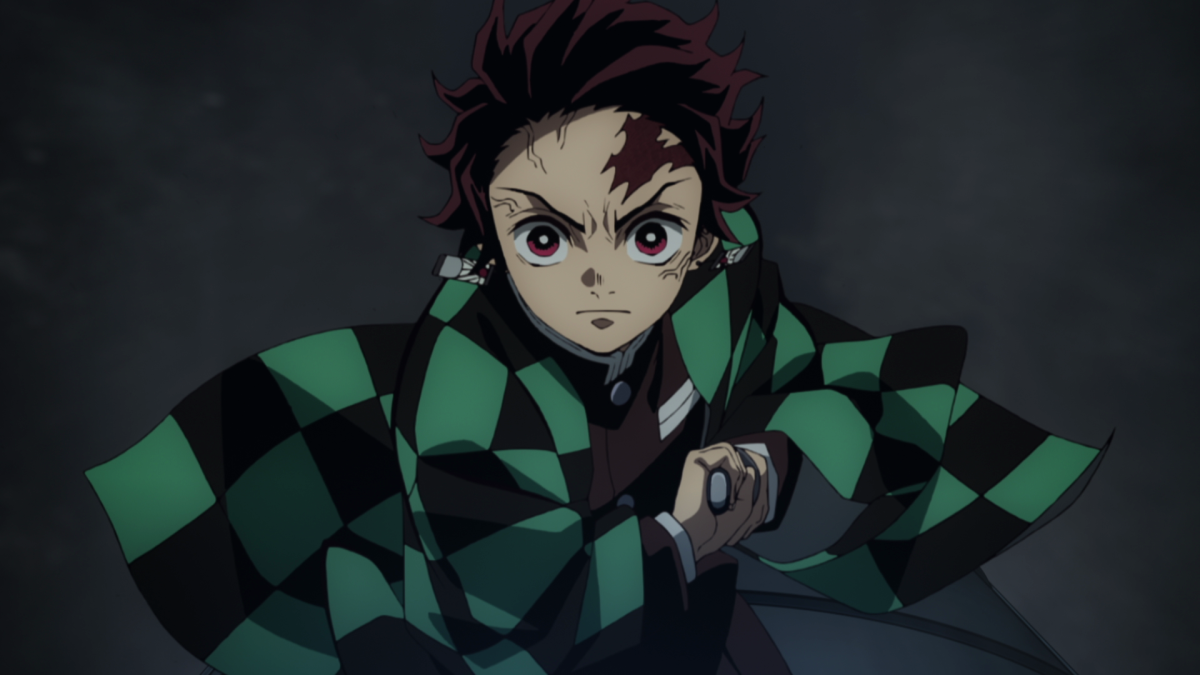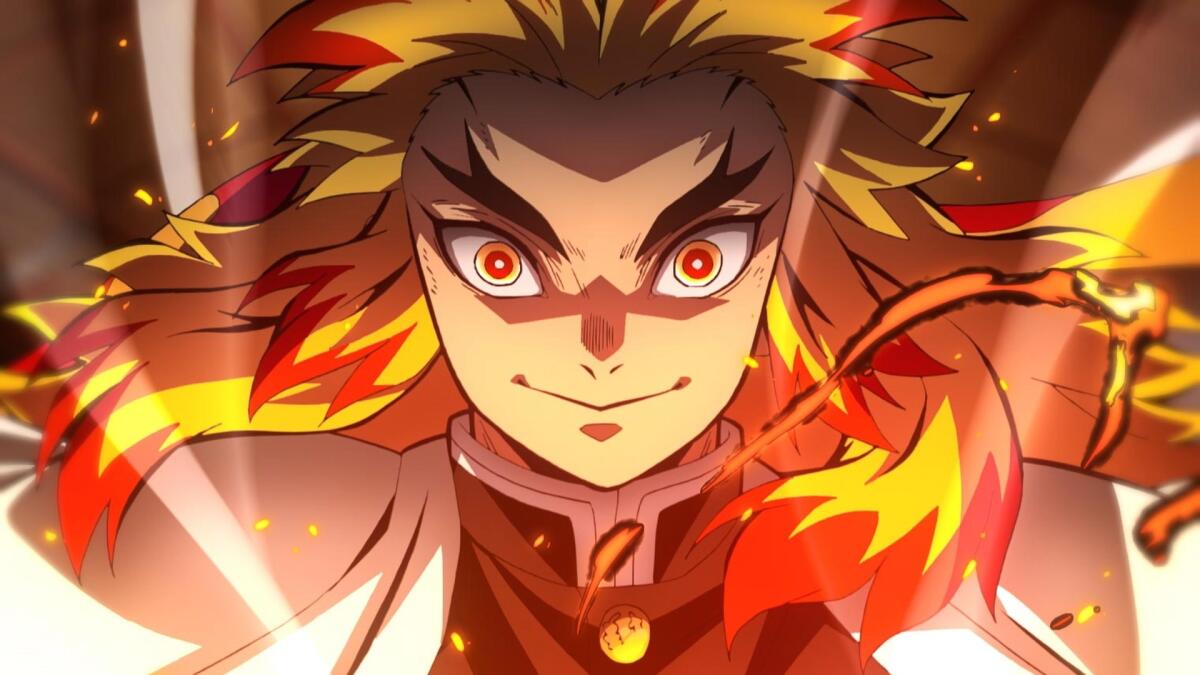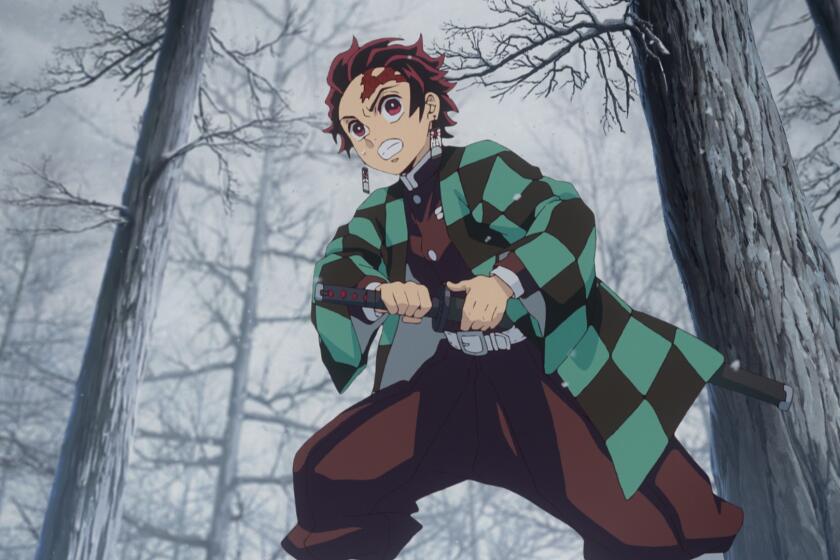Why the ‘Demon Slayer’ movie is such a unique anime success story

One of 2020’s biggest box office hits has finally hit U.S. theaters.
“Demon Slayer — Kimetsu no Yaiba — The Movie: Mugen Train,” released Friday, is more than just an anime film about members of the Demon Slayer Corps trying to protect the passengers of a train from being eaten by a demon. It’s the movie that saved the Japanese box office during the pandemic.
The “Demon Slayer” movie’s record-breaking run started when it opened in October. It took just 10 days for it to gross over $100 million in Japan and became the fastest film to ever hit that milestone. It has since become the highest-grossing anime and highest-grossing Japanese film of all time. “Mugen Train” closed out 2020 with the year’s fourth highest worldwide box office gross, edging out Christopher Nolan’s much-hyped “Tenet,” which came in fifth.
These feats are impressive for any movie, but “Mugen Train” is not even a traditional standalone feature. The “Demon Slayer” movie is the immediate continuation of the “Demon Slayer” TV series’ 26-episode first season. Unlike other anime films with TV counterparts, “Mugen Train” is not a spinoff or a side story with its own canon designed to be more accessible for an audience that may be unfamiliar with the series.
“Demon Slayer,” one of the most successful manga/anime franchises, arrives in U.S. theaters.
What is “Demon Slayer”?
“Demon Slayer: Kimetsu no Yaiba” is originally a manga series by Koyoharu Gotouge. Set in Taisho era Japan (1912-1926), the series follows teenager Tanjiro Kamado, the kindhearted oldest son of a family that makes and sells charcoal. One day he comes home to discover his family has been slaughtered by an oni, or demon, who subsists on a diet of humans. The only survivor is his younger sister Nezuko, who has been turned into a demon but eventually becomes protective of her brother.
After an encounter with Giyu Tomioka, a high-ranking member of a secret organization of warriors tasked with defeating demons known as the Demon Slayer Corps, Tanjiro is sent to train to become a demon slayer. This sets up Tanjiro’s quest to avenge his family and find a way to turn Nezuko back into a human.

Along the way he befriends fellow Demon Slayer Corps members Zenitsu Agatsuma, a cowardly teen who is a surprisingly skilled sword fighter only when unconscious, and Inosuke Hashibira, a rambunctious teen who was raised by wild boars.
The “Demon Slayer” manga was serialized in the weekly manga magazine “Shonen Jump” from February 2016 to May 2020. The full series has been collected into 23 volumes.
How did “Demon Slayer” get so popular?
Although the “Demon Slayer” manga was generally positively received, what really propelled its popularity is the TV adaptation. The first season of the “Demon Slayer: Kimetsu no Yaiba” anime series originally aired in Japan from April to September in 2019. (The series is currently available for U.S. audiences on Netflix and Hulu.)
“Demon Slayer” has been praised for its gorgeous animation, particularly its dynamic action sequences where every frame feels like a piece of art. The stunning visuals are a credit to ufotable, the animation studio behind the anime adaptation.

But the series’ appeal is not the art alone. While “Demon Slayer” features familiar manga tropes, its characters and story have also been a major part of its success.
Tanjiro’s empathy is unmatched and serves as the emotional core of the series. And despite his tremendous loss and various hardships he faces, he knows he has to keep on living and is determined to do what’s best. He’s a character that is particularly resonant during a pandemic where so many people have faced so much loss.
The anime’s popularity led to an increased interest in the manga series, which was still ongoing when the first season had finished airing in Japan. Those curious about how the story continues beyond the anime series turned to the source material. Books from the “Demon Slayer” manga series topped Japanese sales charts in 2020 and was attributed as one of the factors that helped boost the entire comic market.
What’s special about the movie?
The “Demon Slayer” movie had grossed over $417 million worldwide even before hitting U.S. theaters (outside of a short Oscar-qualifying run), making it the first Japanese film to cross the $400 million mark. In December, it became Japan’s biggest box office hit ever, unseating Hayao Miyazaki’s beloved “Spirited Away” (2001).

Part of “Mugen Train’s” box office success can be attributed to the timing of its release. The film hit theaters just as COVID-19 theater restrictions were being lifted in Japan. It also faced little competition from Hollywood, which postponed much of its slate because U.S. theaters remained shuttered. There are reports of a theater in Japan showing “Mugen Train” more than 40 times per day.
Unlike the anime films that are based on a TV adaptation, but exist outside of the series continuity, “Mugan Train” is unique in that it is basically a chapter in the middle of an ongoing story, set between two seasons of a TV show.
What’s next for the franchise?
A second season of the “Demon Slayer” anime series, which picks up the story after the events of “Mugen Train,” was announced in February. The series is expected to air some time this year and will cover what is known as the “Entertainment District” arc.
More to Read
Only good movies
Get the Indie Focus newsletter, Mark Olsen's weekly guide to the world of cinema.
You may occasionally receive promotional content from the Los Angeles Times.








